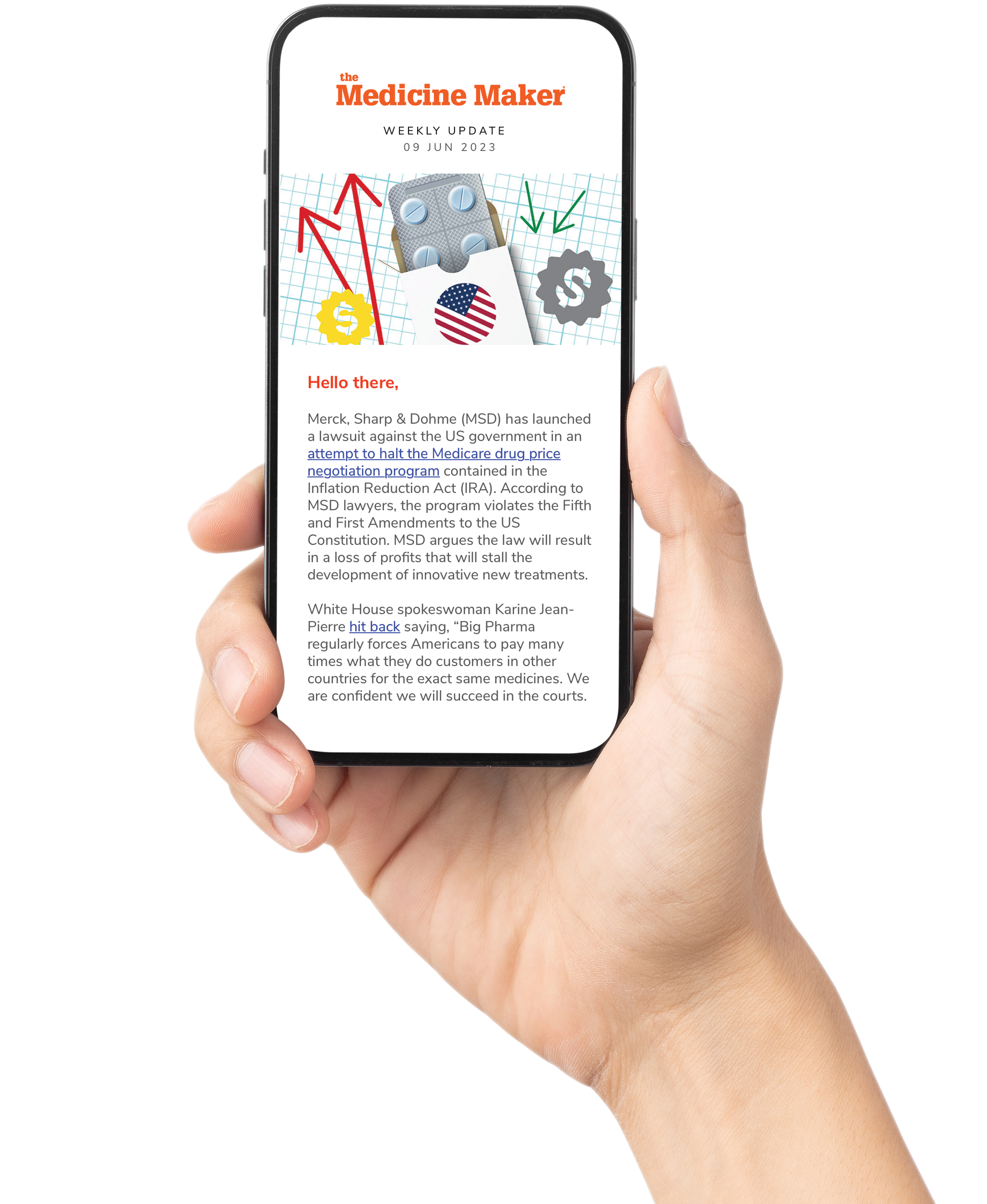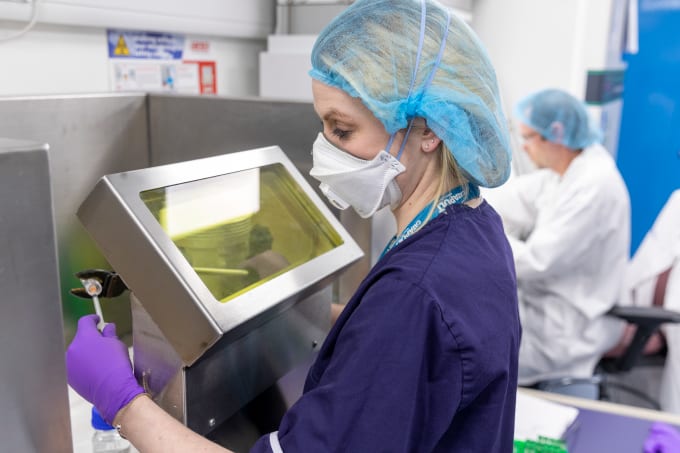
‘’I hope we get to a point where no child or young person misses out on diabetes care just because of where they live, or because their country doesn’t happen to be part of a company-backed programme. Everyone should have access to affordable insulin and basic tools like syringes and glucose monitors.”
Children and young people (CYP) living with type 1 diabetes (T1D) in low- and middle-income countries (LMICs) face avoidable mortality and long-term health complications because of inadequate access to insulin, monitoring tools, and care infrastructure, according to the latest Access to Medicine Foundation report: “Access to diabetes care for children and young people: Pharma companies' current actions and opportunities ahead.”
Despite clinical advancements and innovations in diabetes care, access remains deeply inequitable — particularly for younger populations. With global T1D prevalence in children and young people projected to reach 2.2 million by 2040, the need for targeted, sustainable solutions is becoming more urgent.
The report examines how four leading insulin manufacturers — Lilly, Novo Nordisk, Sanofi, and Biocon — are addressing this access gap through initiatives focused on children and young people in LMICs. It evaluates 11 company-supported programs operating across 71 countries, assessing their coverage, product delivery strategies, capacity-building efforts, and impact on care continuity.
We speak with Claudia Martinez, Director of Research, Access to Medicine Foundation, to learn more.
What specific structural or logistical barriers are preventing these programmes from scaling to reach a larger proportion of children and young people?
Many of these programs rely on strong local partners not only to support implementation, but also to ensure close collaboration with national Ministries of Health, which is crucial for integration into existing healthcare systems. However, in many LMICs, it can be challenging to find local partners who possess both the knowledge and the capacity to engage stakeholders and scale efforts. This lack of strong local partnerships can significantly inhibit the effective implementation and expansion of these programmes.
In many LMICs, there is also a shortage of healthcare professionals who work with T1D. Without sufficient trained personnel, many people with T1D go undiagnosed or are diagnosed too late. Strengthening the healthcare workforce and organized primary care systems that enable follow-up would improve the ability of such programmes to identify children with T1D, and ensure they receive access to insulin and diabetes care.
Additionally, while initial efforts are expected to succeed – especially in urban areas where the identification and provision of insulin via hospitals is easier – scaling these initiatives to remote or rural regions with fewer organized healthcare facilities is much more difficult. Geographic barriers, inadequate infrastructure, and limited transportation significantly restrict access.
The report emphasizes the risks of relying on donation-based models. What practical steps can companies and their partners take to transition from donations to more sustainable, government-integrated models of care?
First, strong and committed leadership within national governments is essential to drive the development of comprehensive, long-term diabetes programs. In countries where multiple initiatives operate simultaneously, coordination between them is important to ensure efficient patient reach while avoiding overlap and duplication of efforts. Close collaboration with national ministries of health is essential, including co-designing training efforts, sharing project outcomes, and jointly developing cost-effective models that demonstrate the feasibility and affordability of T1D care.
With their resources, expertise, and data from supporting T1D initiatives, companies are well positioned to collaborate with governments to integrate donation models into existing primary healthcare systems and supply chains. As manufacturers and suppliers, pharmaceutical companies also have a key role in improving access to insulin and related products, particularly in LMICs. One approach is to implement differential pricing mechanisms that align insulin costs with a country’s ability to pay. By offering insulin at reduced prices in LMICs, companies can help show that governments and health systems can afford to procure sufficient supplies.
The goal is to support the development of self-sustaining national diabetes programs that ensure universal access to care. Over time, this would reduce reliance on pharmaceutical industry and donor support as countries take ownership of diabetes care.
There’s a recent shift toward providing insulin analogues and pens. How do you assess the long-term feasibility of scaling access to newer, more advanced treatment modalities in LMICs, given the affordability constraints?
The concern is valid, especially if donations stop or governments are unable to reimburse the products. However, there are ways for companies and their partners to work together on a phased approach to ensure these products become more accessible. First, companies and partners can collaborate to ensure CYP initiatives include clear transition plans for integrating “newer” treatments, such as insulin analogues, into national health systems. The approach will vary depending on the country’s level of readiness and maturity. For example, companies could begin introducing analogues in countries with more robust health systems. At the same time, countries need to focus on strengthening local health infrastructure, training professionals to ensure effective use of analogues, and developing sustainable financing models.
Second, it is critical that companies that produce and supply these products expand and continue to implement affordability strategies, particularly for insulin analogues, which remain more expensive than human insulins. These strategies could include pricing models that reflect the financial capacities of different countries or payers, setting up local manufacturing partnerships to boost availability, and working closely with governments to transition procurement responsibilities over time.
It’s important to recognize that introducing products like insulin analogues can also stimulate market competition (encouraging biosimilar companies to enter the market and potentially reduce prices for people with diabetes). This will support long-term sustainability.
The initiatives vary widely in design and goals. How is success being defined and measured across these initiatives, and is there a plan to create standardized impact metrics or evaluation frameworks?
A commonly used but not standardized metric across initiatives is the number of children and young people reached, or the number of those gaining access to comprehensive diabetes care. Some initiatives, such as Changing Diabetes in Children (CDiC), also track patient-level outcomes. When initiatives focus on health system strengthening indicators, they might include the number of healthcare professionals trained or the number of awareness sessions conducted. While this paper does not aim to evaluate the specific metrics used by each initiative, a deeper examination of how companies monitor patient reach can be found in our 2024 publication on this topic. Overall, it is important for companies to clearly specify how they measure progress, even if developing a single, standardised metric across all initiatives may not be feasible.
Which specific capacity-building strategies have proven most effective in LMICs, particularly in rural or under-resourced settings?
Strengthening health systems in LMICs has been shown to benefit from healthcare training, transitioning care to non-specialized healthcare professionals, and digital interventions. In chronic non-communicable disease (NCD) care, involving nurses, pharmacists, and other health workers has improved outcomes and reduced the burden on specialists.
In the case of T1D, which requires continuous support beyond medical treatment, LMICs benefit from having trained healthcare workers who even if not specialized can contribute to areas such as nutrition, patient education, and psychosocial care. Initiatives like PEN-Plus support this approach by training mid-level health workers, such as nurses and clinical officers, to diagnose and manage NCDs at decentralized health facilities, thus reducing reliance on specialist care in urban hospitals. Digital health tools are also proving effective in strengthening health systems in LMICs. For diabetes, digital tools are also used to help people better understand and manage their condition. The CDiC program, supported by Novo Nordisk, launched the T1D Bot as an example of an AI-powered WhatsApp chatbot to provide support for families managing type 1 diabetes.
What models or pilot programs are being explored to ensure continuity of care for CYP once they exceed the age limit for support?
Companies and their partners have been approaching the issue of transitioning out of the initiatives and extending the support in different ways. The paper highlights two specific examples that aim to ensure continuity of care for CYP with T1D and extend support beyond the current age limit. Life for a Child, supported by Lilly via their Extend30 initiative, continues to support young adults with T1D by raising its age limit from 26 to 30 in 14 low-income countries and three LMICs. A similar approach is seen in the KiDS programme, which aims to help children manage T1D effectively through tailored educational materials. Supported by Sanofi, this programme is expanding its target age range from children aged six to 14 to include adolescents up to age 18.
However, these are temporary solutions. They do not resolve the core issue. Companies have the opportunity to look beyond donation models and work toward long-term solutions, as the paper highlights, by ensuring that their products are affordable and available through commercial routes, supporting national health systems to prioritize and integrate donations into primary care and the supply chain, and continue to work with local systems to build capacity.
There’s a stated goal to transition care to government ownership. What level of engagements have national governments shown so far, and what are the most common challenges in achieving long-term public sector integration?
Common challenges to integrating diabetes care into public health systems include a gap between national policies and their effective implementation, resulting in fragmented service delivery.
Supply chain issues are another major obstacle with difficulties in procuring, storing, and distributing insulin and other essential medications. Many LMICs face resource constraints, including financial, human, and infrastructural limitations, that inhibit the sustainability of diabetes programs without external support. A lack of trained healthcare professionals limit the reach and quality of care, especially in rural and underserved regions.
Two examples of efforts to integrate diabetes care into national health systems can be seen in Tanzania and Kenya. The Tanzanian government has actively worked to integrate diabetes care into its national health system. Efforts include training healthcare workers in diabetes management, incorporating diabetes care into primary healthcare services, and establishing dedicated diabetes clinics in urban health centers. Additionally, Tanzania has developed national clinical guidelines for diabetes and integrated diabetes care into its NCD programs.
In Kenya, stakeholders have identified a gap between policy formulation and implementation. Despite having developed policies for NCD prevention and control, challenges such as inadequate resource allocation and limited stakeholder collaboration inhibit the effective integration of diabetes care into the public health system.
Biocon’s involvement suggests a role for biosimilar insulin. What is your perspective on the potential of biosimilars to disrupt pricing structures and increase access, and what are the regulatory or market barriers?
The entry of quality-assured biosimilar insulins has significant potential to improve both availability and affordability in LMICs, especially with the recent expiration of patents on several long-acting insulins. While the global insulin market is still largely dominated by a few major manufacturers, several biosimilar companies (including Biocon, but also the likes of Gan & Lee, and Wockhardt) are already producing and supplying insulin in LMICs. In fact, biosimilars hold a meaningful share of the human insulin market in these regions. However, biosimilars still face barriers to price disruption and expanded access. These include scaling production, overcoming brand loyalty to companies like Lilly, Novo Nordisk, and Sanofi, and navigating complex, inconsistent regulatory environments. One regulatory challenge is the lack of harmonized approval pathways across countries, which can delay market entry and create uncertainty, as some countries require additional trials or varying standards for approval.
Beyond product donations and education, what further long-term commitments would you like to see from insulin manufacturers?
Donations can be critical, but they aren’t long-term solutions. The largest insulin manufacturers, due to their dominant market positions and the lifesaving nature of their products, have a responsibility to ensure a consistent and affordable insulin supply, not just through donations, but through commercial operations.
Today, the affordability of insulin remains an issue. While human insulins are more widely available and affordable than analog insulins in LMICs, they’re still out of reach for many. Analogue insulins, priced 6-8 times higher, are even more difficult to access. Over the years, companies have introduced price ceilings, discounts, and subsidies (the Foundation’s 2022 Access to Insulin paper provides an overview of past actions) but these efforts have been patchy, mainly covering human insulin or focusing on a limited set of countries. More recently, companies like Sanofi and Novo Nordisk have launched more comprehensive initiatives, Sanofi’s Global Health Unit and Novo Nordisk’s iCare initiative, to tackle access and affordability barriers.
Moving forward, we expect companies to expand pricing and affordability strategies to more countries and insulin products. This should include companies working with governments to build demand, participating in tenders, and offering lower prices through tailored pricing approaches such as setting different prices for public buyers, private providers, and out-of-pocket payers. Biosimilar companies also have a key role to play by registering and introducing their products in LMICs.
What are your hopes for the future of diabetes treatments, especially for children and young people?
I hope we get to a point where no child or young person misses out on diabetes care just because of where they live, or because their country doesn’t happen to be part of a company-backed programme. Everyone should have access to affordable insulin and basic tools like syringes and glucose monitors —whether they live in a big city, a small rural town, or anywhere in Africa or Europe. Children and young people also need more options, including access to newer insulins that are usually way out of reach in many places. When they grow up, they shouldn’t suddenly lose support just because they’ve aged out of a programme. Governments need to prioritize diabetes in health financing and give companies more certainty around demand and procurement. At the same time, companies must keep collaborating with health systems, ensuring a steady supply and affordable pricing, and working toward truly sustainable access.




